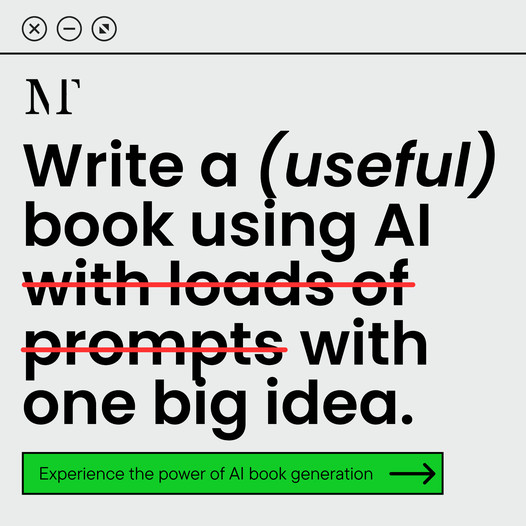Crafting Effective Dialogue
Writing genuine dialogue is all about getting to the heart of your characters. It’s their chance to talk, share, and sometimes argue. Let’s check out some key pointers for writing dialogue that pops.
Using “Said” as Your Go-To
When tagging dialogue, sticking with “said” is usually your best bet. It’s like plain wallpaper—nobody notices it. That way, folks reading your story stay glued to what the characters are saying, not distracted by fancy tags. This makes the dialogue flow naturally.
Using too many descriptors like “exclaimed” or “whispered” makes it feel like you’re waving a giant sign saying, “Hey, look at me!” Just let the words and situation do the talking. Check out this little table to see what works best:
| Type of Tag | Example | Cool Factor |
|---|---|---|
| Default | “I can’t believe it,” she said. | Smooth focus on dialogue |
| Descriptive | “I can’t believe it,” she exclaimed. | Could pull focus away |
Letting Dialogue Tell the Feelings
Trust your dialogue to carry the emotions of the story. Ditch the need for clunky tags that spell out every feeling. Instead, use the words themselves alongside actions and settings to generate depth.
Think about how people talk. The pauses, gestures—these all add flavor to the script. Rather than spelling out anger or joy, let the dialogue show it through subtle hints.
- Ditch: “I’m so frustrated!” he shouted angrily.
- Try: “I can’t handle this,” he said, rubbing his forehead.
By pairing speech with action, you draw readers into the moment, allowing them to see and feel what characters are going through. It’s all about showing, not telling. Let emotions creep into your tale through clever lines that highlight those character vibes.
Want to step up your writing? Jump into more writing tips for self-publishing or see how to create emotional characters. Good dialogue hooks readers, keeps stories on track, and builds characters you’ll remember.
Incorporating Action in Dialogue
Talk and actions together make your storytelling pop, helping characters come alive. It’s all about finding that perfect mix of chat and movement to hook your reader right in.
The Role of Action in Storytelling
Action and what’s being said go hand-in-hand to keep the story rolling. When characters do stuff while chatting, the pace picks up, making everything more lively. Imagine people munching on lunch or sprinting through a chase scene—these visual cues add flavor and dimension, bringing out personalities and interactions. Here’s a quick peek at how action spices up conversations:
| Action | Impact |
|---|---|
| Sipping coffee while scheming | Adds a cozy and real vibe to the chat |
| Pacing around when debating choices | Reveals stress and what’s going on inside their head |
| Pouring a glass as someone makes a speech | Creates a vibe of celebration or seriousness |
Weaving these actions into your story lets readers picture the moment, feeling every twist and turn of emotion.
 What Poetry Feels Like
What Poetry Feels LikeBalancing Action and Dialogue
For stories to grip, actions and words should naturally fit together. Characters should interact with their environment while talking, making sure action complements dialogue to push the plot meaningfully forward.
Here are some cool tips to get that balance just right:
-
Action Tags: Slip in actions alongside what’s being said to keep scenes lively. Like, “She glanced out the window. ‘Think you’ll make it to the party?'”
-
Pacing: Match the tempo of your dialogue and actions. Quick-fire conversations might not need much fuss, but heavy talks benefit from gestures or movements to highlight intensity or attraction.
-
Emotional Vibes: Let characters’ gestures and facial expressions speak where words stumble. Think body language, subtle fidgeting, or inadvertently giving away their feelings.
By artfully weaving action into dialogue, you craft a story that pulls readers in deep. For more juicy writing tips, check out our guides on starter writing tips and advice for fresh writers.
Creating Memorable Characters
Having characters that stick in the minds of your audience is a big deal for any story. What they say, and how they say it, can do wonders to show off their personalities and where they’re from. By focusing on their words, you can make characters who are unforgettable and easy to connect with.
Establishing Personality Through Dialogue
How your characters talk tells a lot about them. Are they the type who spit out quick, sharp sentences? They might come off as a take-charge kind of person. On the other hand, if they’re using grandiose language, they probably seem a little highbrow or wordy. The goal is to let the dialogue show their feelings and thinking process.
Take a look at this handy chart that matches dialogue styles with personality types:
| Character Type | Dialogue Style | Potential Personality |
|---|---|---|
| The Planner | Organized, structured talk | Neat, detail-oriented |
| The Free Spirit | Quick, eager words | Daring, easygoing |
| The Intellectual | Complex, thoughtful language | Smart, sharp-eyed |
| The Jester | Witty, fun chatter | Jokester, playful |
Matching the way a character speaks with who they are makes them feel real. And remember, what your characters say should keep the plot moving and show their different goals—the stuff that makes the story more exciting (The Narrative Arc).
Reflecting Cultural Backgrounds
Showing off where your characters come from in how they talk can really boost the genuineness of your story. Characters that let their background show through their words are not only more believable but also more engaging. Toss in local slang, regional sayings, or storytelling styles to give your characters more layers.
If, for example, a character hails from a certain area or culture, let that shine in their speech. It rounds out who they are and forges a stronger link with the reader. Here’s a chart showing how different cultural angles can affect what characters say:
| Cultural Influence | Dialogue Trait | Effect on Character |
|---|---|---|
| Regional Dialect | Local lingo, slang | Adds a touch of realness |
| Historical Context | Old-timey language | Deepens historical vibe |
| Multilingualism | Switching between tongues | Shows cultural fusion |
| Idiomatic Expressions | Specific cultural sayings | Enhances character’s depth |
When your characters’ dialogues show their diverse roots, it not only makes them more real but also pulls the reader closer to them (Writing Forward). Keep these elements in the forefront as you pen your story, and they’ll shape how your characters come across to your audience. If you’re looking to make characters that leap off the page, see our piece on how to create realistic characters.
Common Dialogue Mistakes to Avoid
When cooking up dialogue, you can stumble into some pretty common traps that can leave your conversations as appealing as overcooked pasta. Spotting these oops moments makes a big difference in whipping up exchanges that hit home with your readers.
Choking Dialogue Scenes
One big misstep is cramming dialogue scenes with too many things or bouncing from topic to topic like a ping pong ball. According to the smart folks over at NY Book Editors, keeping dialogue snug around one idea is key. Roll in too much and your readers might get lost quicker than a cat in a dog park.
Here’s how you keep your chats on the straight and narrow:
- Stay Sharp: Centers conversations around a single juicy bit or tiff.
- Slim Cast: If your dialogue is a crowd, make sure everyone’s got their own drum to beat.
- Snappy Rhythm: Keep chatting bits short ‘n sweet to keep things moving.
This nifty table breaks it down:
| Scene Focus | Example Topic | What’s Happening |
|---|---|---|
| Scene 1 | Friendship | Buddies plan their crazy weekend escapades. |
| Scene 2 | Conflict Resolution | A couple hashes out a spat over spaghetti. |
| Scene 3 | Plot Progress | Secrets drop like a bomb, shaking up the plot. |
Show, Don’t Tell
Another blunder is using dialogue as a blunt tool for clunky explanation instead of letting emotions and character vibes shine through. Good dialogue paints the tone, sprinkles in moods, and throws in gestures that spice up the reader’s experience (NY Book Editors).
To keep your dialogue from feeling like a heavy-handed lecture, try these angles:
- Subtext: Let characters hint at their feelings rather than waving a neon sign.
- True Talk: Use casual phrases and dialect to give life to your characters.
- Push and Pull: Arrange conversations where a lil’ tension reveals what’s bubbling beneath the surface.
Instead of writing:
- “I am very angry with you,” she said.
You can peel it back like this:
- “I can’t believe you did that,” her voice quivered. “What were you thinking?”
By tweaking how you handle these common goofs, your dialogue game will be fresh and engaging. For extra helpings of advice, scope out tips for writing dialogue and other neat resources on bringing characters and scenes to life.
Writing Natural Dialogue
Making characters talk in a way that feels like a real conversation is key. When you write dialogue, try to keep it natural. The way people talk should push the story forward while sounding believable.
Including Realistic Speech Patterns
Your characters should have their own voice that matches who they are. Make their conversations true to life with pauses and interruptions, but skip the pointless chit-chat (NY Book Editors).
Here are some tips to nail down authentic dialogue:
| Tip | Explanation |
|---|---|
| Talk Like They Do | Use words and phrases that fit who your character is and where they’re from (NY Book Editors). |
| Make Their Voice Unique | Build speech patterns that reflect their life and emotions (Writing Forward). |
| Trim The Fat | Stick to the point, cutting out the unnecessary bits so no one’s nodding off. |
These strategies keep your readers hooked, making them feel like they’re right there with your characters.
Moving the Story Forward
Your conversations should do more than just fill in details; they need to drive the story. Good dialogue makes characters show what they want and why they’re doing what they’re doing. Mix it up with action—maybe they’re arguing while racing down a street, adding energy and excitement to the scene.
Remember these when working on dialogue:
- Spill The Drama: Use their words to reveal who’s at odds and what they’re after, creating tension that’ll keep readers flipping pages (The Narrative Arc).
- Mix Talking with Doing: Combine dialogue with actions—like a character folding laundry as they reveal a secret—to add layers to the scene (Writing Forward).
- Leave Some Things Unsaid: Don’t spoon-feed everything; let readers guess a bit. It keeps them curious and glued to your story.
When dialogue is spot on, it keeps readers engaged and eager to see what happens next. For more tips on stepping up your writing game, check out our beginner writing tips or jump into some creative writing exercises for a fun way to improve your skills.
Conveying Character Emotions
Getting a handle on your character’s feelings is at the heart of storytelling. When characters wear their hearts on their sleeves, readers can’t help but lean in, eager to see what happens next. Let’s look at ways to dig into character depths and show emotions through what they say and how they say it.
Enhancing Character Depth
Rich characters aren’t born from thin air—they breathe through their emotions. It’s not enough to tell readers someone is afraid; you paint the picture with their actions and words. Instead of just saying, “She was scared,” let us feel it: “Her heart raced like a freight train, hands shaking as she edged toward the dark alley.”
The devil is in the details. Sprinkle in specifics that ring true for your readers, pulling them into your character’s world. This emotional pull ties readers to your story, making them care about what happens next.
Expressing Emotions Through Dialogue
Look no further than dialogue when trying to convey emotions directly. Words don’t just tell a story—they sing, shout, whisper. Words and their delivery (pitch, pace, volume) can paint a vivid picture of a character’s mood. Below’s a quick look at how feelings twist the way we speak:
| Emotion | Example Dialogue | Delivery Suggestions |
|---|---|---|
| Happiness | “I can’t believe we did it!” | Light and full of life |
| Anger | “You never listen to me!” | Sharp, heated words |
| Sadness | “I just want it to go back…” | Gloomy, slow whisper |
| Confusion | “Wait, what did you mean?” | Puzzled, tilting voice |
Layering dialogue with inner thoughts sets the stage for deeper emotional landscapes. A character who says, “I’m fine,” but thinks, “Why can’t they notice the tears I’m holding back?” adds tension to the spoken word.
When you balance the act of showing emotion through dialogue, actions, and thoughts, your characters pop off the page, inviting readers into their world. If you’re itching to up your conversation game, swing by our tips for writing dialogue.

 Grab my poetry book, 'we're all just wanderers in the end' Here
Grab my poetry book, 'we're all just wanderers in the end' Here AD: Your Book Finally Written...
AD: Your Book Finally Written...